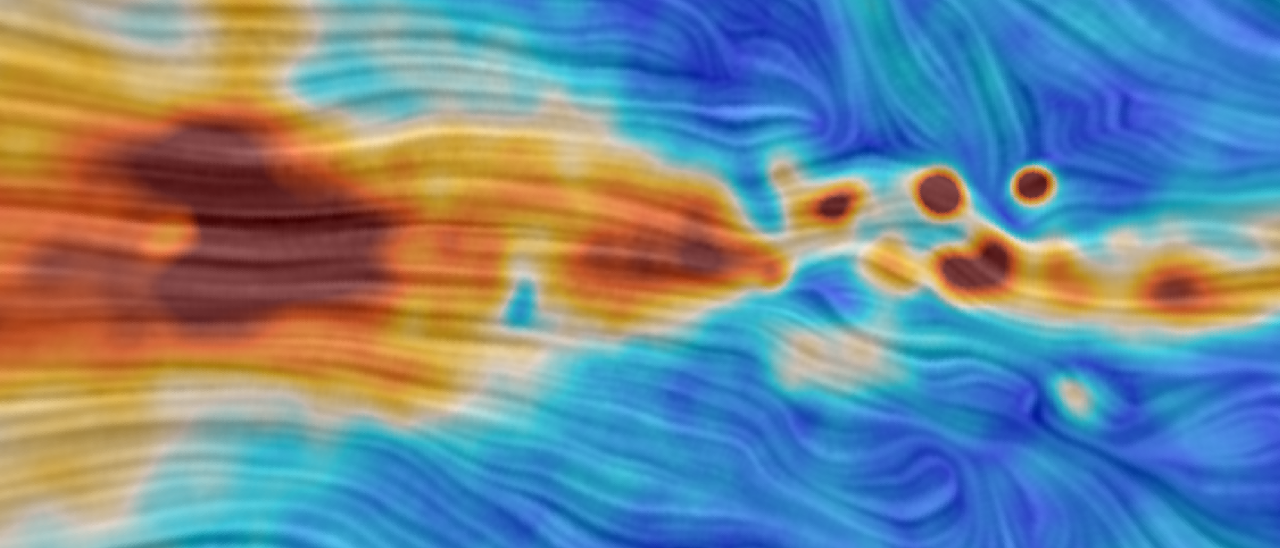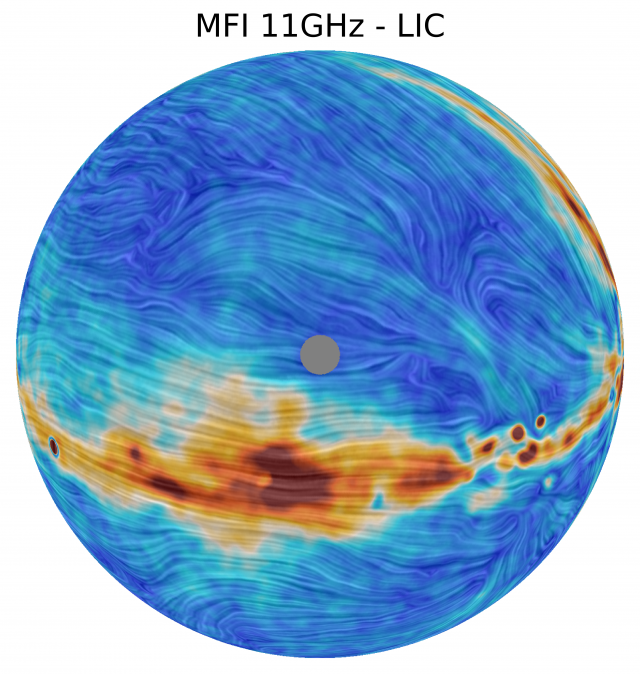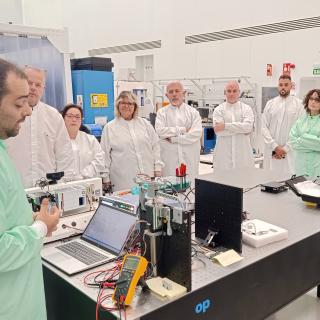Almost a decade after starting observations of the sky in the northern hemisphere, the QUIJOTE Collaboration has presented an initial series of 6 scientific articles, giving the most accurate description we have of the polarization of the emission of the Milky Way in the microwave range. This is a window of observation not previously explored, which provides complementary information to that obtained previously by space missions (Planck and WMAP) dedicated to the study of the cosmic microwave background radiation (CMB), the fossil radiation left behind by the Big Bang. The new results allow us to obtain information about the structure of the magnetic field of our Galaxy, as well as helping to understand the energetic processes that took place close to the birth of our Universe.
The QUIJOTE experiment is sited at the Teide Observatory (Izaña, Tenerife) and comprises two telescopes, each of 2.25m diameter, which observe the sky in the microwave range (10-40 GHz). Led by the Instituto de Astrofísica de Canarias (IAC) this experiment started observing in 2012. Now, thanks to the data obtained with its multifrequency instrument MFI, which was working until 2018, a team of scientists has presented a set of six articles in the specialized journal Monthly Notices of the Royal Astronomical Society (MNRAS) that give the most accurate description until now of the polarization in the microwave emission processes in our galaxy.
“These maps give a detailed description in a new frequency range, from 10 to 20 GHz, complementary to those from space missions that have previously observed the sky at microwaves, such as Planck (ESA) and WMAP (NASA)”, comments José Alberto Rubiño, the scientist in charge of QUIJOTE, and Principal Investigator of the European project RADIOFOREGROUNDS. “We have characterized the synchrotron emission from our Galaxy with unprecedented accuracy. This radiation is the result of the emission by charged particles moving at velocities close to that of light within the Galactic magnetic field. These maps, the result of almost 9,000 hours of observation, are a unique tool for studying magnetism in the universe” he adds.
Polarized synchrotron radiation and the CMB
The CMB is the fossil radiation that originated during the first instants of the universe, and which we observe today at radio wavelength. This type of radiation is studied by scientists because “by studying the properties of its polarization we hope to find an indirect clue to the existence of gravitational waves after the Big Bang” comments Ricardo Génova-Santos (IAC), a member of the science team.
Map of polarized microwave emission in the northern hemisphere measured by QUIJOTE. The drapery pattern represents the direction of the Galactic magnetic field. The colour scale represents the intensity of the emission. Credit: QUIJOTE Collaboration
To measure this signal from the origin of the universe, the scientists need to eliminate the veil of emission associated with our own Galaxy. The new maps provided by QUIJOTE are a tool for performing this task. “One of the most interesting results we have found is that the polarized synchrotron emission from our Galaxy is much more variable than had been thought” comments Elena de la Hoz, a researcher at the Instituto de Física de Cantabria (IFCA). “The results we have obtained are a reference to help future experiments make reliable detections of the cosmological signal” she adds.
“The detection of this cosmological signal, a very specific pattern in the polarization of the microwave background associated with the presence of gravitational waves generated during the so-called inflationary epoch, opens a new window on fundamental physics” notes Rubiño, “which will allow us to explore scales of energy billions of times bigger than those which we can explore on the ground using particle accelerators. Studying it will help us to understand the energetic processes that took place at the birth of the universe”
Anomalous microwave emission
The new data from QUIJOTE are also a unique tool for studying the anomalous microwave emission (AME), a type of emission first detected 25 years ago, which is thought to be produced by the rotation of very small particles of dust in the interstellar medium, which tend to be aligned by the presence of the Galactic magnetic field.
“The polarization properties of these emissions must be characterized and understood in detail in order to decontaminate maps of the polarization of the CMB, leaving them free to study cosmology” comments Frédérick Poidevin, a researcher at the IAC. “Using the new results from QUIJOTE we have improved our understanding of the AME in numerous regions of our Galaxy, explains Denis Tramonte, a researcher at the Purple Mountain Observatory(PMO-CAS, China).
Further results
The maps from QUIJOTE have also permitted the study of the microwave emission from the centre of our Galaxy. Recently an excess of microwave emission has been detected from this region, whose origin is unknown, but whose origin could be connected to the decay processes of dark matter particles. With QUIJOTE we have confirmed the existence of this excess of radiation, and have found some evidence that it could be polarized” comments Federica Guidi, a researcher at the Institut d'Astrophysique de Paris (IAP, Francia).
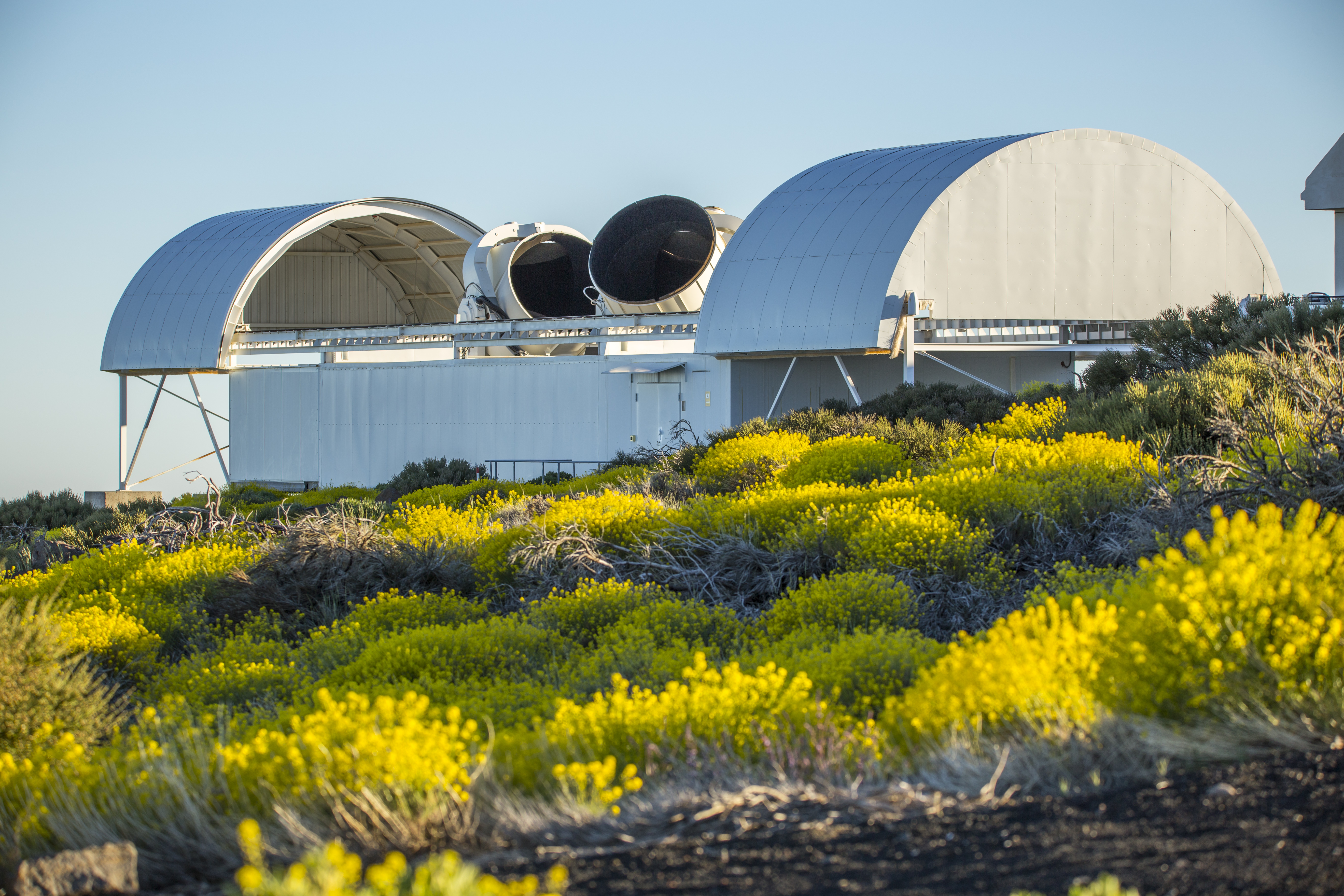
Finally, the new maps from QUIJOTE have permitted the systematic study of over 700 sources of emission in radio and microwaves, of both Galactic and extragalactic origin. “For some 40 of these sources in which polarized emission has been detected, study of their properties gives agreement with the predictions of existing models in the literature” comments Diego Herranz, a researcher at IFCA
As well as these six articles, there are a further eight in preparation, soon to be sent for publication, which continue with the scientific exploitation of the QUIJOTE MFI maps.
QUIJOTE is the result of a scientific Collaboration between the IAC, IFCA, the Department of Engineering and Communications (Santander), the Jodrell Bank Centre for Astrophysics of the University of Manchester, the Cavendish Laboratory (Cambridge) and the IDOM company.
List of the six articles mentioned:
- Rubiño-Martin et al. (2023), “A northern sky survey in intensity and polarization at 10–20 GHz with the multi-frequency instrument”, MNRAS, DOI: 10.1093/mnras/stac3439
- Tramonte et al. (2023), “The microwave intensity and polarization spectra of the Galactic regions W49, W51, and IC443”, MNRAS, DOI: 10.1093/mnras/stac3502
- Guidi et al. “The Haze as seen by QUIJOTE”, MNRAS, DOI: 10.1093/mnras/stac3468
- Poidevin et al. (2023), “Galactic AME sources in the QUIJOTE-MFI North Hemisphere wide survey”, MNRAS, DOI: 10.1093/mnras/stac3151
- de la Hoz et al. (2023), “Diffuse polarized foregrounds from component separation with QUIJOTE-MFI”, MNRAS, DOI: 10.1093/mnras/stac3020
- Herranz et al. (2023), “Radio sources in the QUIJOTE-MFI wide survey maps”, MNRAS, DOI: 10.1093/mnras/stac3657
Further information:
The QUIJOTE maps are available publicly via:
List of the members of the QUIJOTE collaboration
Contacts:
Jose Alberto Rubino-Martin (IAC): jalberto [at] iac.es
Denis Tramonte (PMO): tramonte [at] pmo.ac.cn
Federica Guidi (IAP): federica.guidi [at] iap.fr
Frederick Poidevin (IAC): fpoidevin [at] iac.es
Elena de la Hoz (IFCA/Unican): delahoz [at] ifca.unican.es
Diego Herranz (IFCA): herranz [at] ifca.unican.es
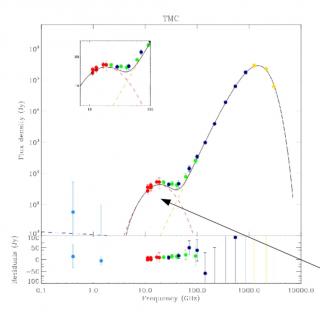
Aula
